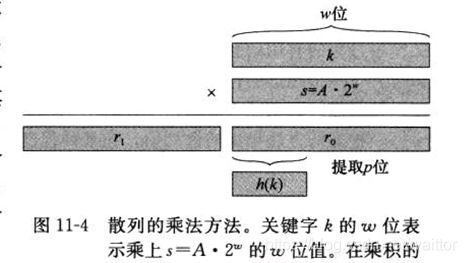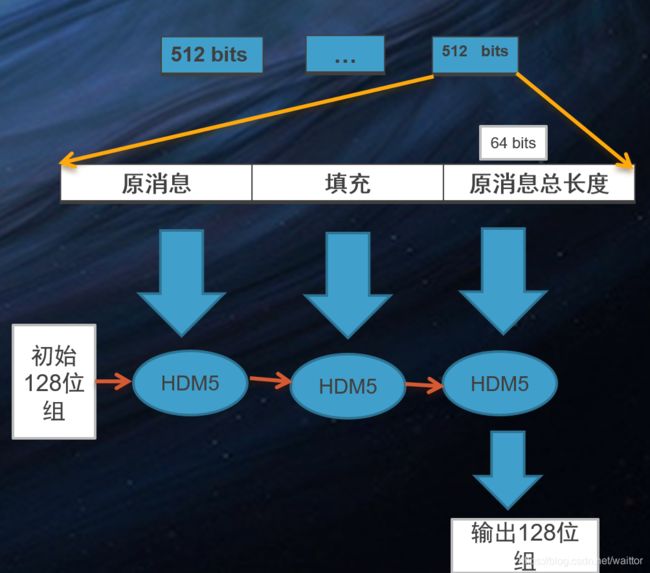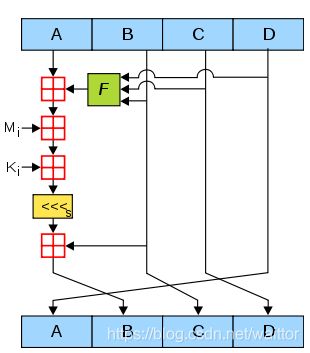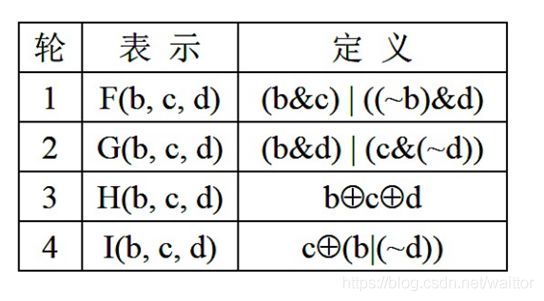哈希思想的简介、实现与深入
一、定义
一个哈希组是满足下列条件的四元组(x,y,k,h):
1) x是所有可能的消息的集合;
2)y是由可能的消息摘要或认证标签构成的优先级,摘要即压缩后的数据;
3)K 是密钥空间,是所有可能的密钥构成的有限集;
4)对每个k ∈K, 存在一个哈希函数h: x->y;
ͼK,存在一个hash函数hk ͼ H,hk:
x→yͼ
二、简介
哈希的主要工作是将高维数据变为低维紧凑的二值码,即将复杂类型的数据用二进制串作为存储密码存储在计算机中,因此哈希表针对图像、视频或者文本数据库进行存储,实质是对原始数据的有损压缩。
分类: 无监督哈希和有监督哈希;
过程:key -> hash值 -> 桶号code ->存储
目的:让hash值均匀分布在桶中,使查找的消耗降到O(1);
优点:数据存储和查询消耗的时间大大降低;
缺点:消耗比较多的内存;
三、常见哈希函数
直接定址法
1、除留余数法
设哈希桶大小为m,取一个接近m的数p, hash(key) = key % p;
随机数法
折叠法
数学分析法
平方取中法
2、乘法散列法
hash(key) = floor( m * ((key *A) mod 1))
设w为计算机字长,0 取 s = A * 2w, key *s 为2w位数,前w位为整数部分,后w位为小数部分; 再看上述散列,哈希函数的运算为取s的后w位的前几位为散列值。 3、全域散列法 解释: 为防范恶意存储数据到相同槽,哈希函数被设置为从哈希函数集中随机选取。 Data ==> { hash_f1,hash_f2,hash_f3,…} ===> hashcode 一个常见方法: 取 m 为素数,取随机数 A 为r+1位m进制数,表示为 将 key 转换为m 进制数,表示为 则哈希函数H[A](k)为: H[A](k) = sum { Ai * ki, i= 1,..m-1} mod m 结果为桶数组的槽数。 1)线性检测 以{12,15,4,5}为例 2)二次检测 3)双重散列 hashcode = (h1(key) + i * h2(key)) mod m 做法是在每一个表格(哈希桶)元素中维护一个list/queue/tree,然后我们在list/queue/tree上进行元素的插入和搜索删除等操作。虽然对list进行搜索是一种线性操作,但是只要list足够短,速度还是很快。 评价标准: 1) 正向快速--高效率、结果分布均匀; 2) 逆向困难; 3) 输入敏感,同时抗干扰强; 4) 冲突避免; 评价角度: 1) 定址---创建时,能够快速有效地确定桶号 e.g 除留余数法的取模运算时间 2) 查找---取值时,能够准确快速地找到内容 e.g 链接法查找时间与表的长度成正比 1、取模运算优化 除留余数法是最常用的哈希方法,但取模运算在计算机中的运算效率并不高,所以可以用以下操作代替: a % b = (b-1) & a, 当b(数组长度)为2的幂时等式成立 JDK中的Hashmap采用的是这样的办法,也因此哈希桶的长度为2的幂。 2、位运算优化 字符串哈希函数(如Time33算法)会遇到大量的数乘运算,可以使用加法和移位代替乘法提升效率: Hash * 33 = hash + hash << 5 3、扩容 当哈希表容量超过一定程度时,冲突会产生更多,冲突处理降低了哈希表的效率,这时需要对哈希表进行扩容。容量扩张是一次完毕的,期间要花非常长时间一次转移hash表中的全部元素。这样在hash表达到临界时,往里插入一个元素将会等候非常长的时间。 1)扩容多少? 通常为扩容为原来的2倍。当桶数组的长度为2的幂时,意味着不需要重新计算哈希值,而只是判断在原来哈希值的最高位是1还是0.即: new_hash = 1/0 + old_hash 2)解决扩容带来的时间消耗 ---- 分摊转移 声明一个新的扩容后的哈希表,每当增加一个新元素时,先将旧哈希表一个槽的所有元素转移到新哈希表,再计算该元素位置。 1) 输入:512 bits分组 2) 输出:128 bits消息摘要 3) 过程: a. 消息填充,补齐消息长度为模512时为448 ; b. 附加消息的长度值,在最后64位加上消息长度,消息总长度达到512的整数倍; c. 初始化消息摘要(MD)缓存器,128位组; d. 处理每一组的512位的报文分组 e. 输出 HMD5由4轮运算组成,每轮16步,分别处理512/32=16个分组,经过64轮处理后,存储初始摘要的位置变为输出摘要。 过程: (1)对 A 迭代:a ← b + ((a + g(b, c, d) + X[k] + T[i]) << (2)缓冲区 (A, B, C, D) 作循环轮换:(B, C, D, A) ← (A, B, C, D) 注: 1)a, b, c, d : MD 缓冲区 (A, B, C, D) 的当前值; 2)g : 轮函数 (F, G, H, I 中的一个); 3)<< 4) X[k] : 32位子明文块; 5)T[i] : 常数; 6)“⊕”为模232操作,基于Davies-Meyer construction理论--- f(x, y) = Ey(x)⊕x 接口文件hash.h 具体实现 hash.c 测试demo 《算法导论第三版》 《算法笔记》 《Sorting and Searching, Volume 3 of The Art of Compute Programming》; 《Handbook of Algoruthms and Data Structures》; 《Dynamic perfect hashing :Upper and lower bounds 》; Coron, J.-S., Dodis, Y., Malinaud, C., & Puniya, P. (2005). Merkle-Damgård Revisited: How to Construct a Hash Function. 四、冲突处理方法
1、开放寻址法
2、链地址法
五、哈希函数性能评价
六、哈希函数的改进
七、哈希思想的实现---MD5
1. 主体描述
2. 迭代哈希函数HMD5 -- 思想:单向散列函数 干扰函数(待续)
八、哈希思想的实现---通用模型(C)
/* 功能:实现一个哈希函数的通用模型
* 作者:waitor
* 日期:20190514
* 描述:使用单链表作为链地址法的数据结构
* 备注:负载因子达到75%时未实现扩容,解决冲突的数据结构可以扩展为红黑树
* */
#include #include "hash.h"
// 新建哈希表
hash_map_t *hashmap_new(int size, int capacity)
{
hash_map_t *hashmap;
hashmap = (hash_map_t *)malloc(sizeof(hashmap));
hashmap->size = size;
hashmap->capacity= capacity;
hashmap->ths = NULL;
hashmap->hf = NULL;
hashmap->cf = NULL;
hashmap->map_struct =(hash_item_t *)malloc(hashmap->size*sizeof(hash_item_t));
return hashmap;
}
// 释放哈希表空间
int hashmap_release(hash_map_t *hashmap)
{
hash_item_t *qn;
hash_item_t *tmp;
for(int i=0; i#include "hash/hash.h"
__uint32_t hashcode(char *str)
{
__uint32_t code = 5381;
while(*str) {
code = (code << 5) + code + *str++;
}
return (code & 0x7FFFFFFF);
}
int compare(char *str1, char *str2)
{
while(*str1)
{
if((*str1++) != (*str2++))
return 0;
}
return 1;
}
int main() {
hash_map_t *hashmap;
hashmap = hashmap_new(10, 100);
hashmap_set_hf(hashmap, NULL, (hashcode)hashcode);
hashmap_set_cf(hashmap, NULL, (compare)compare);
hashmap_release(hashmap);
return 0;
}参考资料





